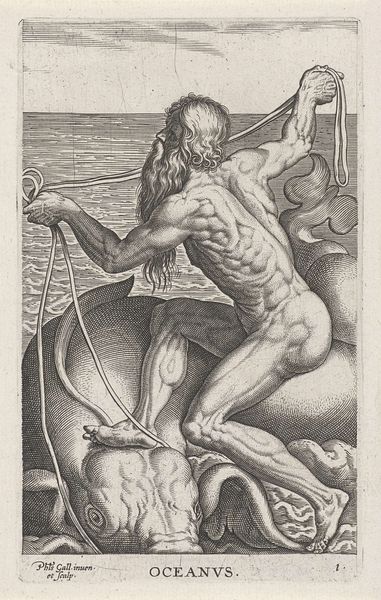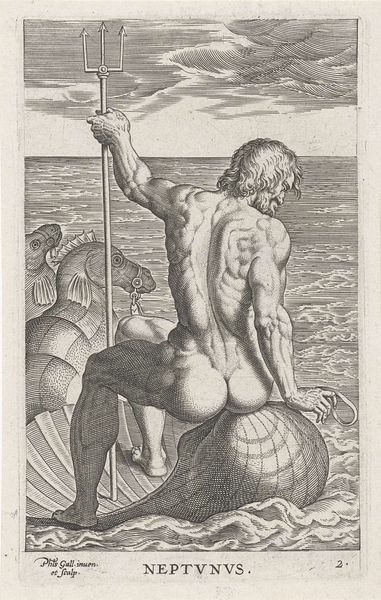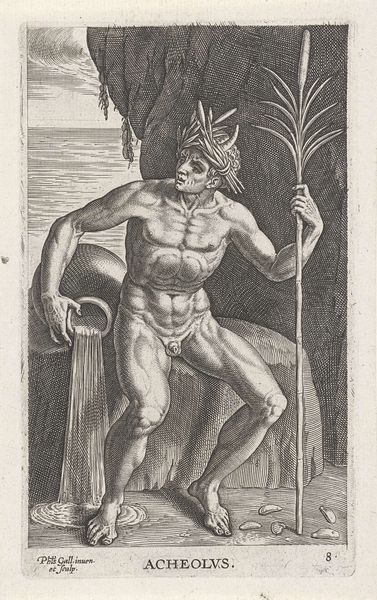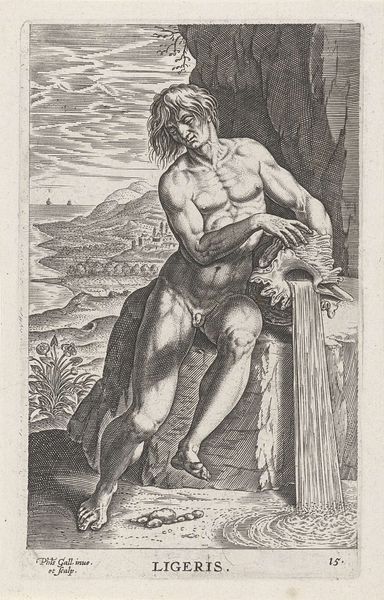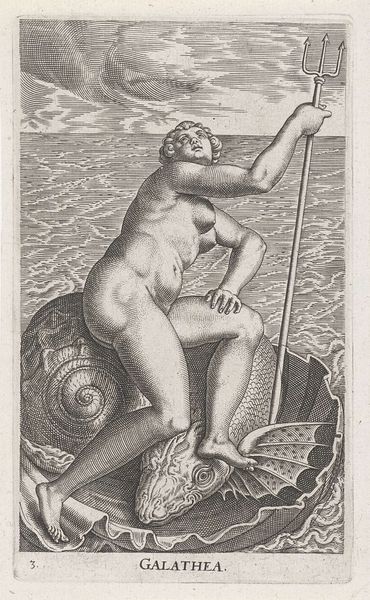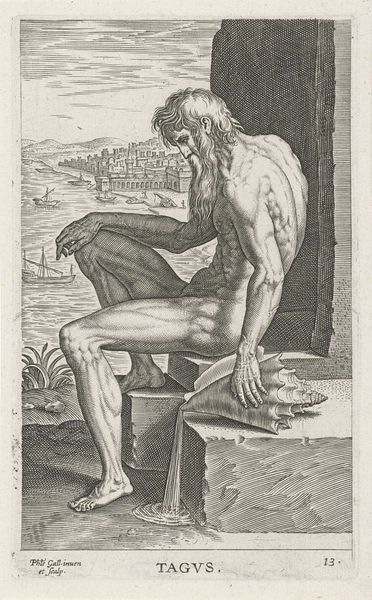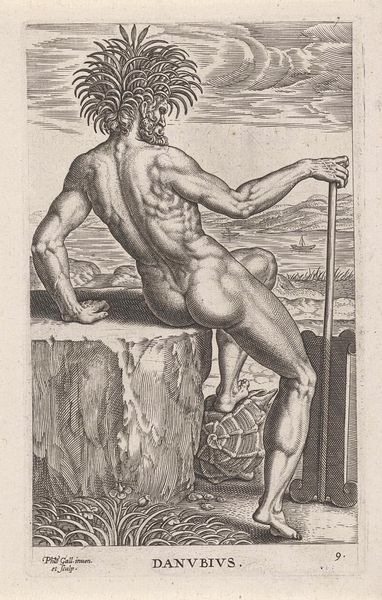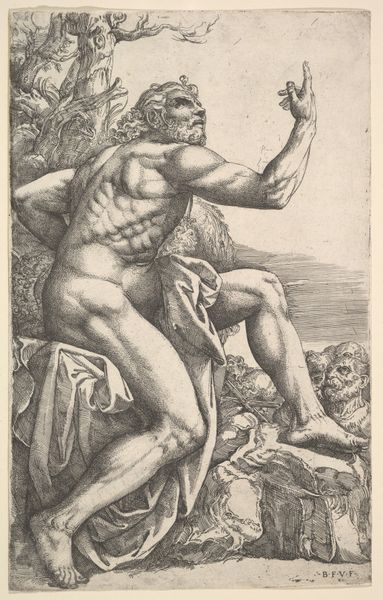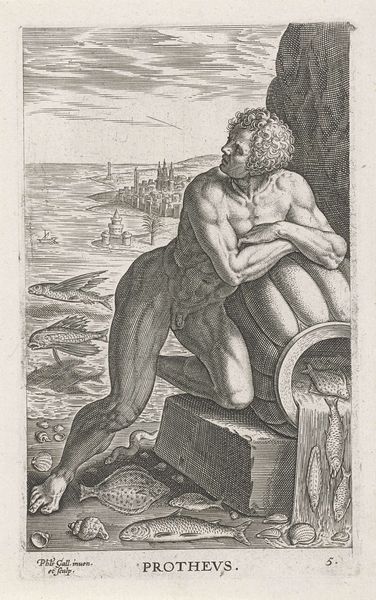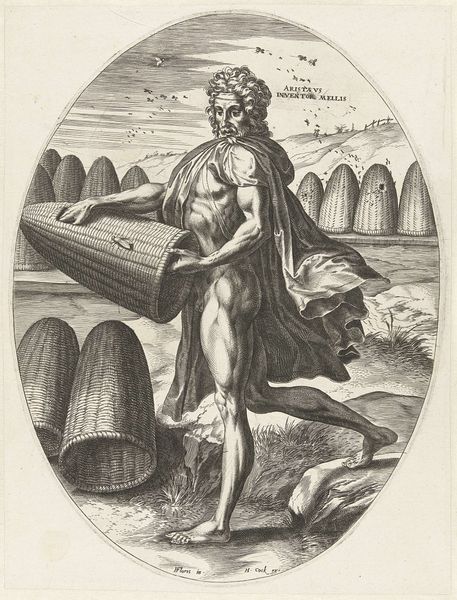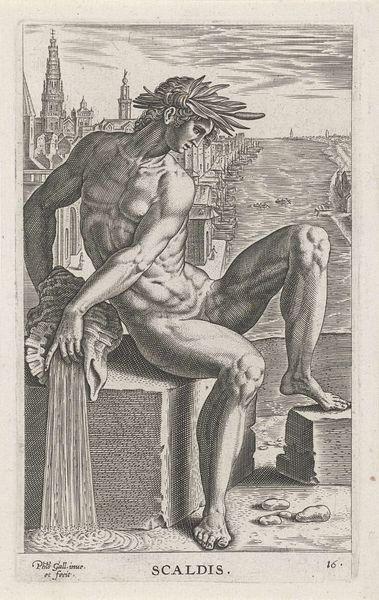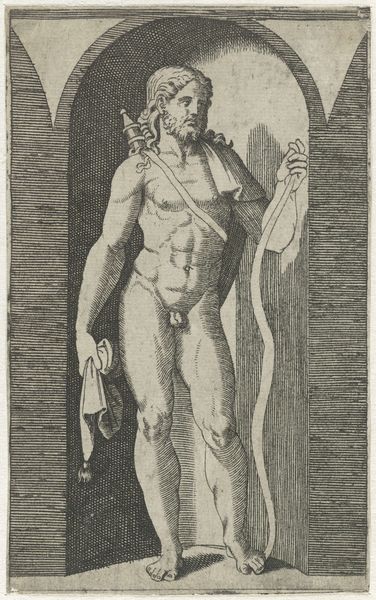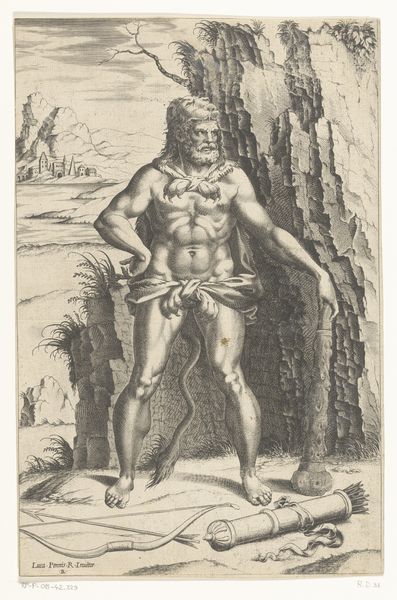
Dimensions: height 165 mm, width 102 mm
Copyright: Rijks Museum: Open Domain
Editor: We're looking at "Zeegod Nereus," an engraving by Philips Galle, created in 1586. The detail achieved through engraving is remarkable; what immediately grabs my attention is the contrasting textures—the smoothness of the god's skin against the intricate detail of the shell he sits upon. What stands out to you when you look at this piece? Curator: It is a masterclass in line and form. Notice how Galle uses the varying densities of lines to create a sense of depth and volume. Look at the musculature of Nereus; each line contributes to a powerful sense of three-dimensionality. The repetitive, almost rhythmic, curves within the shell provide a textural counterpoint that guides the viewer's eye. Editor: So the formal aspects are really driving the interpretation here. Does the surrounding scene with the figures in the water add a significant element, formally? Curator: The background figures provide a spatial context but, importantly, do so without disrupting the formal dominance of Nereus himself. They are rendered with less detail, functioning almost as a backdrop to the central figure. Their postures, almost echoing each other, lead the eye to trace the plane and thus return again to Nereus. The composition creates an emphasis. Do you perceive such focus too? Editor: Yes, I see what you mean about the composition being framed by those figures. The consistent hatching and precise lines create a sense of idealized form. It’s like he's celebrating the perfection achievable through this medium. Curator: Precisely. Galle seems interested in how much dimension and texture he could suggest through this calculated, disciplined approach, as if setting formal limits for creative yield. Editor: This close analysis of the lines and textures has certainly deepened my understanding and appreciation for Galle's technique. I hadn't initially considered the extent to which the engraving's composition dictated the overall impression of power. Curator: Indeed, a shift in perspective reveals the intentional harmony behind the surface, rewarding closer engagement with formal relationships.
Comments
No comments
Be the first to comment and join the conversation on the ultimate creative platform.

